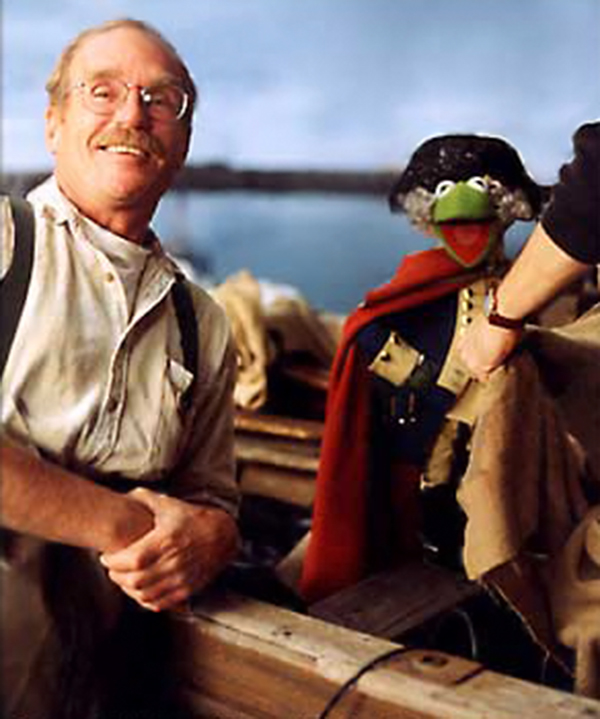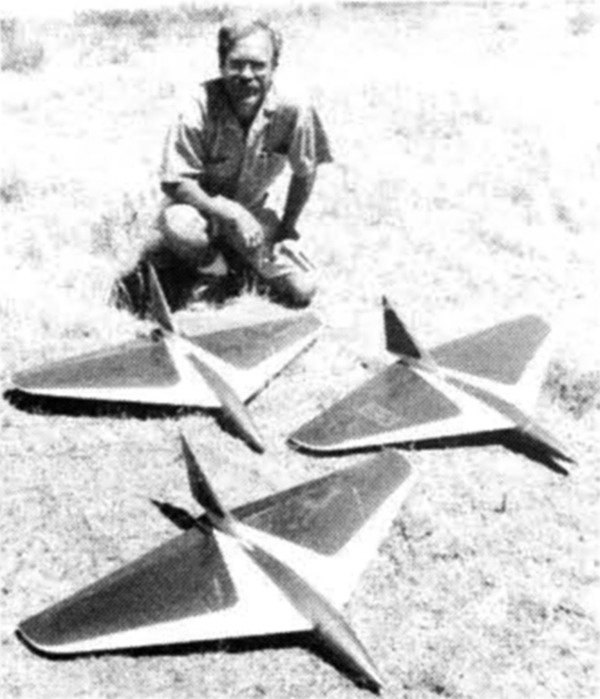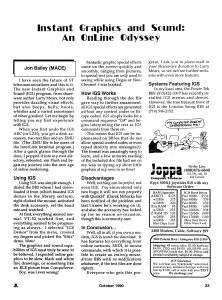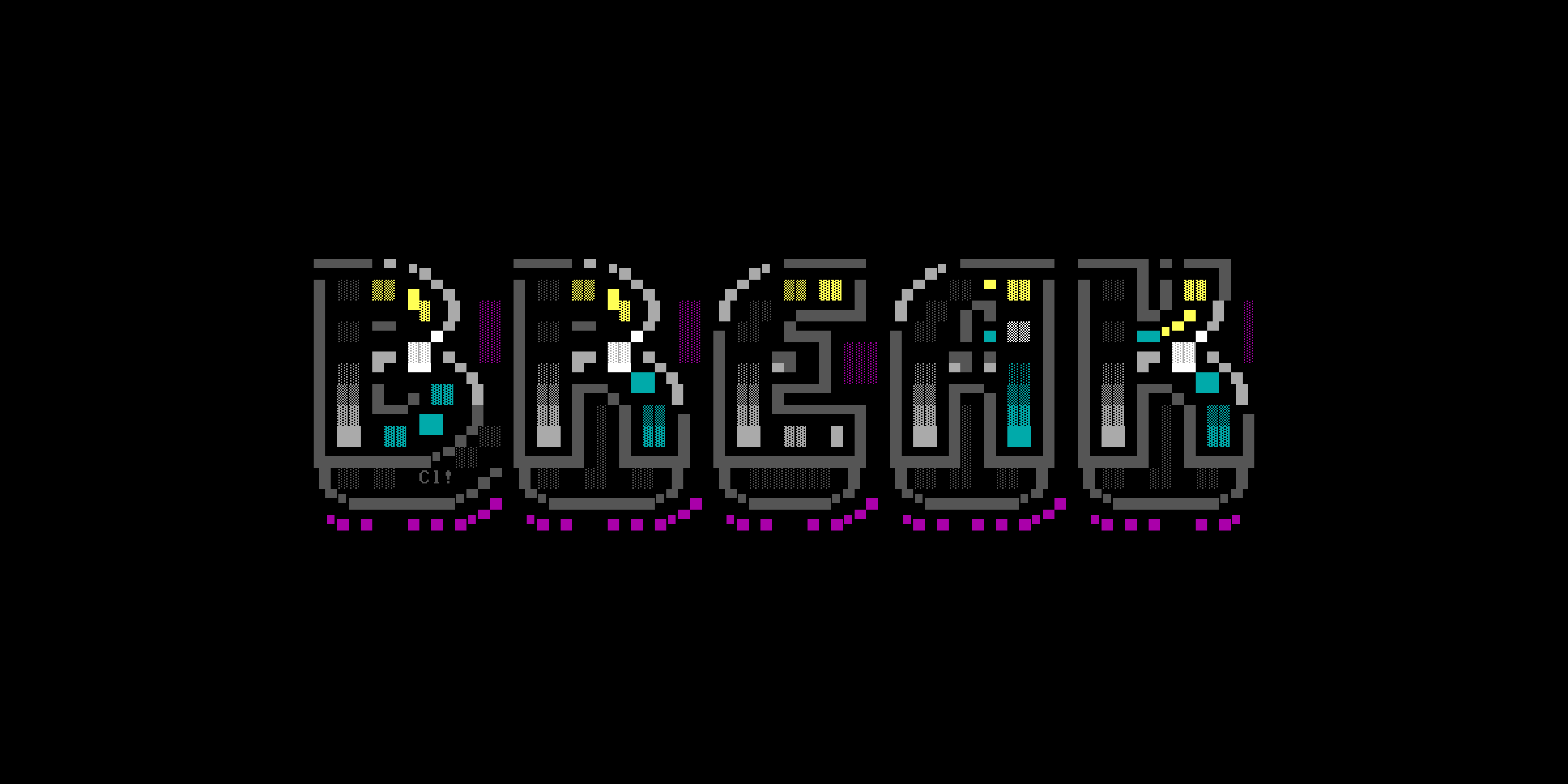This is the fourth part of a multi-part series.
Steve Turnbull’s world couldn’t have been more different from that of Larry Mears, creator of “Instant Graphics and Sound.”
Mears was a shipping clerk in the Deep South. Turnbull worked in showbiz and lived in sunny Laguna Beach, California, in a yellow beach cottage with turqouise trim. Vines grew in the siding, and the roof sagged, but he and his wife Karen loved the poorly built little house all the same.

He worked as a scenic artist on movies, TV shows, and other productions, such as a humorous 1990 U.S. Mint commercial starring Kermit the Frog as Gen. George Washington crossing the icy Delaware River. To bring the commercial to life, Turnbull had painted an enormous background, created floating icebergs, and helped construct a 4-foot-deep river.
It was hard, highly creative work. A good sense of humor on set was a must.
During the U.S. Mint shoot, Kermit’s cloak kept flying too wildly, so Turnbull decided to solve the problem. He grabbed a staple gun, waded out to the boat, and stapled the frog’s foot in place.
Suddenly Kermit jerked upward, screaming “Ow! You’ve stapled my foot! You idiot, that’s my foot!”
“I jumped backward in panic at what I’d done,” Turnbull wrote later. “The crowd on stage gasped in horror!”
But then realization hit them: it was just a puppet!
“The entire stage erupted in laughter,” he wrote. “We’d been ‘had’ by the practical-joking operator of Kermit.”
In his free time, Turnbull poured the same creativity and passion into designing and building remote-controlled gliders.
He could often be found “slope soaring” on buttes and hills near the coast. Around the same time that Mears was struggling to get people to try IGS, Turnbull was setting up the Swell Aircraft Company to sell his own “Pharaoh” and “Blitz” gliders.

Do you enjoy my retrocomputing stories on Break Into Chat? Please join my email list and stay in touch. 📬
‘BEYOND COLORED BOXES’
Despite their differences, Turnbull had a lot in common with Mears. A self-described “Atari fanatic,” Turnbull loved to fire up his Atari 1040ST and use his 2400-baud modem to call BBSes, particularly London Smog BBS in Santa Ana, where he went by the handle “Mr. Rodgers.”
But over time, the shine had worn off telecommunication for Turnbull, just as it had for Mears. A visual thinker, he found it difficult to share his thoughts and ideas using only text.
Then he discovered “Instant Graphics.”
Turnbull downloaded IGS v2.12 from the GEnie online service in early 1990 and began to explore the included art examples. For this release, Mears had included new demos: several 3-D wireframe models he had converted to IGS format from data originally published in Tom Hudson’s article “Son of Solid States” in the September 1984 issue of ANALOG Computing.
Larry Mears converted this wireframe model of a TIE fighter to IGS format from data originally published by Tom Hudson in ANALOG Computing.
Turnbull loved what he saw, but as a visual artist, he realized that nobody had fully tapped the system’s potential yet. Maybe he could.
He spent a week tinkering and learning how to write IG code. In that short time, he produced half a dozen new demos featuring helicopters, oil tankers, cartoon characters and more.
Turnbull took advantage of IGS’s new bit-blitting feature to bring his art to life with animation, making flying saucers zip across the screen and land on planets. Each of his pieces was punctuated with sound effects — and often a sly sense of humor.
One of Steve Turnbull’s early animation efforts, “SAUCER.IG”, an animated menu listing London Smog BBS’s door games, was included as a demo in IG v2.14.
Paul Aylward, the sysop of London Smog, allowed Turnbull to overhaul his BBS visually, designing new IGS menus and screens, and incorporating some of his experiments. Eventually, the two would push London Smog’s IGS presentation farther than almost any other board. Atari Interface Magazine would later call it the “true treasure trove of IGS.”
But for now, Turnbull wasted no time sharing his new IGS art with the wider Atari world, packaging all his new demos into an .ARC file and uploading it to GEnie in mid-February 1990. You can feel his excitement in the promotional description he wrote:
“If you’ve seen the demo files included in the Instant Graphics accessory file and thought they were so-so, YOU NEED THIS ARC!!! … See the AWESOME power IG will unleash in telecommunications! BBSing will never be the same again. This is a collection of 11 Instant Graphics files that will turn your Atari into a movie theater, so get some popcorn, sit back, and let the show begin!”
At the same time, he sent Larry Mears emails full of unbridled enthusiasm for IGS, and urged Mears to look at what he had created. His new screens went “far beyond colored boxes with text in them,” Turnbull wrote. He asked Mears to consider including them in future IG releases to inspire other artists.
“Just to think of what will be coming in the near future, as more and more users begin to use IG makes my knees weak!” he wrote.
Steve Turnbull’s “CHECK.IG” animation is a good example of how he used of sound. Each planetary reveal is punctuated with a bell sound. Then, after the punchline, he plays a sound effect reminiscent of chuckling. This “chuckle” sound became a staple of his IG work, sure to be heard if a piece included a joke. (Turnbull ended his first email to Mears with the same punchline: “… as they say in Tinsel-Town, ‘The check’s in the mail’, only this time BELIEVE IT!”)
THE FRUSTRATION AND THE FUN
It took weeks before Mears saw these messages. Though he had a GEnie account for distributing new IGS releases, the service was so expensive that he seldom signed in. Over that time, though, he had begun hearing rumors about what was happening across the country at the London Smog BBS.
“I have been meaning to call your BBS,” Mears replied. “Everybody says the Smog burns with IG graphics.”
Mears was excited to hear from someone so passionate about IGS, someone using his software to make art the way he’d imagined, someone adept enough to find and report bugs or ask for new features. From this point forward, Mears would always include Turnbull’s work in his new IGS releases to demonstrate what was possible.
Anthony Rau, the Florida-based co-creator of the IGS Editor drawing program, did the same. He included a piece by Turnbull called “PHAROAH.IG” — an animated advertisement for his “Pharaoh” remote-controlled glider — with the editor’s v1.6 release in early April.
Another of Steve Turnbull’s early IG efforts, “PHAROAH.IG”, combined his love of gliders with his love of design and animation.
Suddenly, Turnbull was IGS’s biggest evangelist. He promoted the format everywhere he could, and he kept churning out crazy new IGS art. He would share it with Atari users through message bases on national BBS networks like FNet and CrossNet, or package it into archives and upload it to the GEnie online service.
He wanted others to get in the game, so he wrote tutorials and graphical primers to share the tips and techniques he had learned. Rau included one such instructional text file, titled Instant Graphics Made Simple!, in the release of his IGS Editor v1.6.
“I am not a programmer, but I AM a user who has experienced the frustration and fun of trying to program in IG,” Turnbull wrote.
Toward the end of this in-depth tutorial, Turnbull shared a piece of IG code to draw a fly on the screen. Then he explained step-by-step how use IGS’ bit-blit command to animate it zipping across the screen.
The code for this extremely short animation was included in “HELP_IGS.TXT”, a tutorial by Steve Turnbull included with the IGS Editor v1.6 release.
“Watching cartoons brings a sense of wonder to the surface for me,” he wrote. “The animators had to create thousands of drawings for just a few minutes of film. With IG, the effort is far less, but the effect can be just as wondrous.”
He devised a simple exercise to encourage people to practice writing IGS code: design a personalized, graphical “calling card” in a 540×120 rectangle; then share it whenever they connected to a new Atari ST BBS. He hoped sysops might create message boards exclusively for the sharing of such cards.
The code for Steve Turnbull’s own fun animated “calling card” was included in “HELP_IGS.TXT”, a tutorial written by Turnbull and included with the IGS Editor v1.6 release.
Steve Turnbull created this animated “calling card” for IGS creator Larry Mears. Turnbull later described this card as follows: “The white symbols and lines would smoothly morph, over about 20 seconds, from a computer logic flowchart and into a Christian cross, reflecting his strong beliefs.”
“I was awestruck when I first saw what IG could do,” Turnbull wrote later in a retrospective. “Once the rest of the computing world saw this stuff, there would be no going back to plain text. It would become an entirely new medium of animated online thought.”
THE GOLDEN AGE
Turnbull’s emergence as the preeminent artist and chief evangelist for IGS marked the beginning of a sort of “golden age” for the format, from roughly mid-1990 through 1992. All the pieces were finally in place for IGS to succeed: a graphical editor, impressive work from a talented artist, increasing publicity, and regular software updates.
Invigorated by all the attention, Mears threw himself into programming new features for IGS. In March, he released v2.13, which added the & loop command — a powerful tool for animation — plus new commands for playing music.
Turnbull found eye-catching applications for this new loop command, some of which he showed off in a piece later that year called “CUBES.IG”, featuring five 3D cubes rotating in different directions.
Steve Turnbull’s “CUBES.IG” featured five 3D cubes rotating in different directions.
He created the effect by invisibly pre-drawing a sprite sheet of animation frames, blitting it to memory, then using the loop command to quickly and repeatedly blit the animation frames from memory to the correct spots on screen.
Later in the animation, he used loops to paint a background by drawing a series of lines with varying start and end points, resulting in a trippy moiré pattern. This method of creating patterns with the loop command became a hallmark of Turnbull’s work.
Perhaps the most revolutionary new features Mears added to IGS came in May 1990 with the release of v2.14: support for user input, including mouse interaction. Sysops could finally design point-and-click menus for their BBSes!
This was no small thing. The Atari ST was among the first generation of home computers to feature a mouse-driven, graphical user interface when it debuted in 1985, yet BBSes running on STs had remained stuck with keyboard-driven, text-only interfaces all that time. Now, tantalizing new possibilities were open. (In the next part of this series, we’ll explore several specific games and projects that took advantage of these features.)
This undated example of a point-and-click file directory menu from “WRB BBS” was created by Larry Mears, a longtime user of that BBS, to demonstrate IGS’s new mouse capabilities.
Atari ST sysops and users began to evaluate — or re-evaluate — using IGS. One such discussion took place in August 1990 on the “Bath BBS” in Bath, England, when sysop Malcolm Burridge asked his users whether he should reintroduce IGS support on his board after having removed it.
“The results are quite spectacular,” he wrote, “but it does suffer from problems with line noise, etc.”
“However, the question is DO YOU WANT IT? … Please remember that there is a lot of work involved in setting this up so please don’t ask for it if you are not going to use it.”
Increasingly, sysops were willing to put in the work. In September 1990, Mears published a list of 12 systems in the U.S. and the U.K. that he knew had strong IGS support.

Then came Instant Graphics’ best publicity yet. Jon Bailey wrote a glowing review in the October issue of Atari Interface Magazine, and AIM included IGS v2.14 on its “disk of the month.”
“I have seen the future of ST telecommunications and this is it,” Bailey proclaimed.
“The graphics and sound capabilities of IGS must truly be seen to be believed,” he wrote. “I expected online graphics to be slow, black and white line drawings, or something like an .RLE picture from CompuServe. Boy, was I ever wrong!”
A GROWING COMMUNITY
As interest grew, several national Atari BBS networks added message bases dedicated to discussing Instant Graphics. The Instant Graphics Support conference on Fnet was particularly active — by late 1991 it contained nearly 1,000 messages.
Turnbull presided over this growing community, posting new artwork, answering questions, explaining tips and tricks, and encouraging others to do the same.
Folks shared their IGS experiments and helped each other. People like Steve Cole, who uploaded a utility he created to convert a bitmap image from the popular Degas format into the Instant Graphics .IG format (a similar idea to the GIF-to-ANSI converters popular among PC BBSers).
Or Kelley Rogers, who, inspired by an November 1991 article in Omni magazine, posted a simple Magic Eye-style 3D stereogram in IG format.
Kelley Rogers created this simple Magic Eye-style 3D stereogram in IG format in November 1991.
Another user, Ron Rabaut, dissatisfied with Rau’s IGS Editor — “the program has a lot of bugs” he once told Mears — ended up making his own. His simpler program, called LineDraw, included a graph paper background and a helpful coordinate display.
Even Larry Mears, when he had trouble debugging IGS, would share source code and get advice. Cole, Rogers, and Lawrence Gold helped him fix IGS’s R resolution-switching command, for example.
Paul Baker, Eric Jolley, Rich Tietjens, Dave Jackson, and Lasse Eldrup were among the many other names on the forum.
They would write messages with titles like “IG IS SPREADING!” They would share jokes or straight-up bizarre creations, like this one posted by “Trekkie” in Little Rock, Arkansas, comparing computer terminology with things you would find in the bathroom:
In August 1992, the user Trekkie from “Main STreet BBS” in Little Rock, Arkansas, posted this humorous animation comparing computer terminology to bathroom fixtures.
As far back as the first version of Instant Graphics! in 1988, Mears had articulated his hopes for a future — much like the HTML-powered World Wide Web to come — where online publications would use IGS to “embed graphics commands into their text for illustration purposes.”
Outlets like Z*NET never did this. But on these IG message forums, it happened regularly.
For example, during a November 1991 discussion of computer memory and stack space started by Kelley Rogers, Turnbull responded to Rogers’ post with a detailed illustration of an ST’s memory map, hand-crafted in IG script, from information he had found in the Abacus book “Atari ST Internals.”
“I hope that helped, Kelley,” he wrote at the end.
Steve Turnbull responded to a discussion of memory and stack space in November 1991 with a detailed illustration of an ST’s memory map, hand-crafted in IG script.
Or, to give one more example: the following summer, James Williams asked if it was okay to post IG code directly onto the Instant Graphics support message base on Fnet. Rather than type a simple plain-text answer like “Yes, it’s fine,” Steve Turnbull instead replied with this short, colorful, and trippy animation:
“POSTING.IG” is Steve Turnbull’s graphical reply to a question from James Williams about whether it was acceptable to post IG code directly onto the Fnet message base.
Turnbull, the visual thinker, had found in IGS the perfect medium to express himself.
Up next — Part 5: Point and click

Share your thoughts!